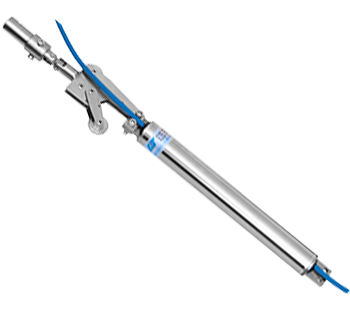INCLINOMETER
Wireless IPI
This is the most advanced wireless in-place inclinometer (IPI) system, designed to measure the lateral movement of earthworks or structures. The IPI is used in critical applications where real-time monitoring and early warning are required in order to protect life and valuable assets.

Specifications
The wireless IPI system basically consists of an array of digital inclination sensors, placed inside the inclinometer gage well. The IPI sensor array is interfaced with the wireless network through a Node that allows sensors to send recorded data to the Gateway through a long-range radio frequency wireless communication network. The Gateway then uploads all the collected sensor data to the central/cloud server. This model consists of tilt sensors with both SDI-12 and Modbus output, making it more versatile for different types of dataloggers.
A single 3 conductor bus cable is threaded in a daisy chain fashion connecting each digital IPI sensor to its next immediate neighbor and finally to the top of the borehole and directly to the wireless communication network through a Node. This has great advantages at locations with a large number of sensors in a borehole, as it eliminates the hassle to accommodate a large number of individual signal cables inside the borehole. The wireless system adds to this advantage by eliminating the need for running lengthy cables across large sites.
The design allows each sensor to move independently to each other without influence from the sensors above or below. This provides a profile of displacement over the complete length of the installation.
| Sensor | Uniaxial or biaxial sensor |
| Measuring range | ± 15° |
| Accuracy1 | ± 0.1% fs |
| Resolution | ± 0.05 mm/m (8 arc seconds) |
| Output | |
| Temperature range | -20°C to 80°C |

